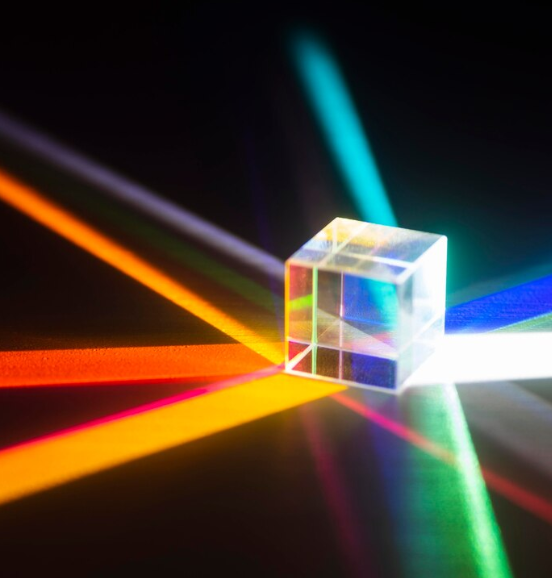Unit 6 Overview: Geometric and Physical Optics

Introduction: Unlocking the Mysteries of Light
Light is one of the most fascinating phenomena in our universe. It allows us to see the world around us, powers our technology, and has puzzled scientists for centuries with its seemingly contradictory properties. In this comprehensive guide to geometric and physical optics, we’ll explore how light behaves both as a particle and a wave, and how this dual nature creates the optical effects we observe every day.
Whether you’re a physics student preparing for exams, an optics enthusiast, or simply curious about how your glasses, camera, or fiber optic internet works, this guide will illuminate the principles that govern light’s behavior and its countless applications in modern technology.
By the end of this article, you’ll understand the fundamental differences between geometric and physical optics, master key concepts like Snell’s Law and the thin lens equation, and appreciate how these principles enable technologies from simple mirrors to advanced laser systems.
The Dual Nature of Light
Light exhibits a remarkable duality that has challenged physicists for generations. Is it a wave or a particle? The answer, surprisingly, is both.
The Wave-Particle Paradox
- Particle Theory (Photons): Light behaves as discrete packets of energy called photons. This explains phenomena like the photoelectric effect, where light knocks electrons free from metals.
- Wave Theory: Light also behaves as electromagnetic waves, explaining effects like interference and diffraction that particles alone cannot account for.
This duality forms the foundation for studying optics through two complementary approaches:
- Geometric Optics: Treats light as rays traveling in straight lines, ideal for studying mirrors, lenses, and image formation
- Physical Optics: Examines light as waves, necessary for explaining phenomena like interference, diffraction, and polarization
Understanding both perspectives gives us a complete picture of light’s behavior across different scenarios and applications.
![Illustration showing light as both a wave and particle]
Fundamentals of Geometric Optics
Geometric optics takes a simplified approach by treating light as rays that travel in straight lines until they encounter boundaries between different media.
Key Principles of Geometric Optics
- Light Propagation: Light travels in straight lines through a uniform medium
- Principle of Reversibility: Light rays follow the same path whether going forward or backward
- Independence of Light Rays: Different light rays do not affect each other when crossing paths
These principles allow us to predict with remarkable accuracy how light will behave when interacting with mirrors, lenses, and other optical devices.
Applications of Geometric Optics
Geometric optics principles are foundational to numerous optical devices:
- Eyeglasses and Contact Lenses: Correct vision by properly focusing light onto the retina
- Cameras: Form images through careful arrangement of lenses
- Telescopes: Gather and focus light from distant objects
- Microscopes: Magnify small objects through multiple lens systems
- Periscopes and Fiber Optics: Redirect light using reflection principles
Waves in Optics: The Foundation
At the heart of physical optics lies the wave nature of light. These electromagnetic waves consist of oscillating electric and magnetic fields that propagate through space.
Key Properties of Light Waves
Understanding light waves requires familiarity with several fundamental properties:
- Wavelength (λ): The distance between consecutive peaks or troughs of a wave, measured in meters (m) or nanometers (nm)
- Frequency (f): The number of wave cycles passing a point per second, measured in hertz (Hz)
- Amplitude (A): The maximum displacement of the wave from its equilibrium position, representing the wave’s intensity or brightness
- Phase (φ): The position of a point within a wave cycle, measured in degrees or radians
These properties determine how light interacts with matter and with other light waves. For instance, different wavelengths of visible light appear as different colors to the human eye.
The Relationship Between Wavelength and Frequency
Light’s wavelength and frequency are inversely related through the equation:
$$c = λf$$
Where:
- $c$ is the speed of light in a vacuum (299,792,458 m/s)
- $λ$ is the wavelength in meters
- $f$ is the frequency in hertz
This relationship means that as wavelength increases, frequency decreases, and vice versa. For example, red light has a longer wavelength and lower frequency than blue light.
![Diagram showing wave properties including wavelength, frequency, and amplitude]
The Electromagnetic Spectrum
Visible light represents just a small portion of the electromagnetic spectrum, which spans from radio waves to gamma rays.
Regions of the Electromagnetic Spectrum
The spectrum is divided into regions based on wavelength and frequency:
| Type | Wavelength Range | Applications |
|---|---|---|
| Radio Waves | >1 m | Broadcasting, communications |
| Microwaves | 1 mm – 1 m | Cooking, radar, telecommunications |
| Infrared | 700 nm – 1 mm | Thermal imaging, remote controls |
| Visible Light | 400 – 700 nm | Human vision, photography |
| Ultraviolet | 10 – 400 nm | Sterilization, black lights |
| X-rays | 0.01 – 10 nm | Medical imaging, security scanning |
| Gamma Rays | <0.01 nm | Cancer treatment, nuclear medicine |
The Visible Spectrum
The visible spectrum—the light we can see—spans from approximately 400 nm (violet) to 700 nm (red). This narrow band of wavelengths triggers different photoreceptors in our eyes, allowing us to perceive different colors.
Polarization of Light
Polarization describes the orientation of light’s electric field oscillations. Unpolarized light has electric fields vibrating in all directions perpendicular to the direction of propagation, while polarized light has oscillations restricted to a specific direction.
Applications of polarization include:
- Polarized Sunglasses: Reduce glare by blocking horizontally polarized light reflected from surfaces
- 3D Movies: Use differently polarized light for each eye to create stereoscopic images
- LCD Screens: Control light transmission by manipulating polarization
- Stress Analysis: Identify internal stresses in transparent materials through polarization changes
Periodic Waves and Mathematical Models
Periodic waves repeat their pattern at regular intervals, making them predictable and mathematically describable.
The Wave Equation
The general form of a traveling wave can be expressed as:
$$y(x,t) = A \sin(kx – ωt + φ)$$
Where:
- $A$ is the amplitude
- $k$ is the wave number (2π/λ)
- $ω$ is the angular frequency (2πf)
- $φ$ is the phase constant
- $x$ is the position
- $t$ is the time
This equation allows us to calculate the displacement of a wave at any position and time, providing a complete mathematical description of the wave’s behavior.
Wave Profiles and Visualization
Wave profiles—graphs showing displacement versus position at a fixed time—help visualize how light propagates:
- Longer wavelengths (like red light) have broader profiles and lower frequencies
- Shorter wavelengths (like blue light) have narrower profiles and higher frequencies
These visualizations are especially helpful when analyzing phenomena like interference patterns, where multiple waves combine.
![Graph showing wave profiles for different wavelengths]
Light Interactions: Refraction, Reflection, and Absorption
When light encounters matter, three primary interactions can occur: refraction, reflection, and absorption.
Refraction: Bending Light
Refraction occurs when light changes direction as it passes from one medium to another with a different refractive index. This bending of light is governed by Snell’s Law:
$$n_1 \sin(\theta_1) = n_2 \sin(\theta_2)$$
Where:
- $n_1$ and $n_2$ are the refractive indices of the two media
- $\theta_1$ is the angle of incidence
- $\theta_2$ is the angle of refraction
The refractive index of a material is the ratio of light’s speed in a vacuum to its speed in that material. Common refractive indices include:
- Air: approximately 1.0003
- Water: approximately 1.33
- Glass: approximately 1.5 (varies by type)
- Diamond: approximately 2.42
Total Internal Reflection
When light attempts to pass from a medium with a higher refractive index to one with a lower index at an angle exceeding the “critical angle,” it is completely reflected back into the original medium. This principle enables fiber optic communications and gives diamonds their sparkle.
The critical angle can be calculated as:
$$\theta_c = \sin^{-1}\left(\frac{n_2}{n_1}\right)$$
Where $n_1 > n_2$ (i.e., light is moving from a higher to lower refractive index medium).
Reflection: Bouncing Light
Reflection occurs when light bounces off a surface. The law of reflection states that:
The angle of incidence equals the angle of reflection
Both angles are measured relative to the normal (perpendicular) to the surface at the point of reflection.
Types of Reflection
- Specular Reflection: Occurs on smooth surfaces where all reflected rays remain parallel (mirrors)
- Diffuse Reflection: Occurs on rough surfaces where light scatters in many directions (paper, walls)
Absorption: Capturing Light
Absorption happens when a material converts light energy into other forms, typically heat. Different materials absorb different wavelengths, which is why objects appear colored—they reflect the wavelengths they don’t absorb.
For example:
- A red apple absorbs most wavelengths except red, which it reflects
- Black objects absorb most visible wavelengths
- White objects reflect most visible wavelengths
These three interactions—refraction, reflection, and absorption—explain virtually all macroscopic optical phenomena we observe daily.
![Diagram showing refraction, reflection, and absorption of light]
Image Formation with Lenses and Mirrors
Lenses and mirrors form images by controlling how light rays converge or diverge.
Lenses: Bending Light to Form Images
Lenses use refraction to form images by redirecting light rays.
Types of Lenses
Convex (Converging) Lenses
- Thicker in the middle than at the edges
- Converge parallel light rays to a focal point
- Can form both real and virtual images
- Examples: magnifying glasses, camera lenses
Concave (Diverging) Lenses
- Thinner in the middle than at the edges
- Diverge parallel light rays
- Form only virtual images
- Examples: eyeglasses for nearsightedness
The Thin Lens Equation
The relationship between object distance ($d_o$), image distance ($d_i$), and focal length ($f$) is given by the thin lens equation:
$$\frac{1}{f} = \frac{1}{d_o} + \frac{1}{d_i}$$
This equation allows us to predict where an image will form given the object position and the lens’s focal length.
Lens Magnification
The magnification ($m$) of an image is calculated as:
$$m = -\frac{d_i}{d_o}$$
Where:
- $m > 1$ indicates magnification
- $m < 1$ indicates reduction
- Negative values indicate an inverted image
Mirrors: Reflecting Light to Form Images
Mirrors form images by reflecting light according to the law of reflection.
Types of Mirrors
Plane Mirrors
- Flat, reflecting surfaces
- Form virtual, upright images of the same size as the object
- Image distance equals object distance
Concave (Converging) Mirrors
- Curved inward like the inside of a bowl
- Converge parallel light rays to a focal point
- Can form both real and virtual images
- Examples: shaving/makeup mirrors, telescope reflectors
Convex (Diverging) Mirrors
- Curved outward like the outside of a bowl
- Diverge light rays
- Form only virtual, reduced images
- Examples: side-view mirrors on vehicles, security mirrors
The Mirror Equation
Mirrors follow the same mathematical relationship as lenses:
$$\frac{1}{f} = \frac{1}{d_o} + \frac{1}{d_i}$$
For mirrors, the focal length ($f$) is half the radius of curvature of the mirror.
Ray Diagrams
Ray diagrams provide a graphical method for determining image position, size, and orientation by tracing key light rays through an optical system. For both lenses and mirrors, typically three principal rays are used:
- A ray parallel to the principal axis
- A ray through the center of the lens or mirror
- A ray through the focal point (or appearing to come from it)
The intersection of these rays indicates where the image forms.
![Ray diagram showing image formation with convex lens]
Wave Phenomena: Interference and Diffraction
Physical optics explores phenomena that can only be explained by considering light’s wave nature.
Interference: When Waves Combine
Interference occurs when two or more coherent light waves overlap. The resulting pattern depends on how the waves’ phases align:
- Constructive Interference: Occurs when waves are in phase, resulting in amplified brightness
- Destructive Interference: Occurs when waves are out of phase, resulting in reduced brightness or darkness
Young’s Double Slit Experiment
This landmark experiment demonstrated light’s wave nature by showing interference patterns when light passes through two narrow slits. The pattern of bright and dark bands on a screen can be explained only if light behaves as a wave.
The positions of bright fringes are given by:
$$d \sin \theta = m\lambda$$
Where:
- $d$ is the slit separation
- $\theta$ is the angle from the central maximum
- $m$ is the order of the fringe (0, 1, 2, …)
- $\lambda$ is the wavelength
Diffraction: Light Bending Around Obstacles
Diffraction occurs when light waves encounter obstacles or apertures comparable in size to their wavelength, causing them to bend around corners and spread out.
Single Slit Diffraction
When light passes through a single narrow slit, it forms a diffraction pattern with a central maximum flanked by dimmer secondary maxima. The angular position of the first minimum is given by:
$$\sin \theta = \frac{\lambda}{a}$$
Where $a$ is the width of the slit.
Diffraction Gratings
A diffraction grating contains many regularly spaced slits or lines. When light passes through, it creates a pattern where specific wavelengths are diffracted at specific angles according to:
$$d \sin \theta = m\lambda$$
Where $d$ is the grating spacing. This relationship makes diffraction gratings valuable for spectroscopy—analyzing light composition by separating its component wavelengths.
Practical Applications of Interference and Diffraction
These wave phenomena enable numerous technologies:
- Optical Coatings: Anti-reflective coatings on camera lenses and glasses use interference to reduce unwanted reflections
- Holography: Creates three-dimensional images using interference patterns
- Spectrometers: Analyze light composition using diffraction gratings
- Interferometers: Measure extremely small distances or changes by detecting interference patterns
![Interference pattern from Young’s double-slit experiment]
Practical Applications of Optics
The principles of geometric and physical optics underpin countless technologies and natural phenomena.
Everyday Applications
Vision Correction
- Eyeglasses use converging lenses to correct farsightedness
- Contact lenses use diverging lenses to correct nearsightedness
- LASIK surgery reshapes the cornea to correct refractive errors
Photography and Imaging
- Camera lenses form real images on sensors or film
- Telescopes gather and focus light from distant objects
- Microscopes magnify tiny specimens through multiple lenses
Communications Technology
- Fiber optic cables transmit data using total internal reflection
- Satellite dishes use curved reflectors to focus signals
- Laser communication systems provide high-bandwidth data transmission
Advanced Technological Applications
Laser Technology
- Medical lasers for surgery and treatments
- Industrial lasers for cutting and welding
- Barcode scanners and measurement tools
Optical Data Storage
- CDs, DVDs, and Blu-ray discs use laser diffraction
- Holographic data storage for high-density archives
Scientific Instruments
- Interferometers for gravitational wave detection
- Spectrometers for material analysis
- Astronomical instruments for observing distant celestial objects
Natural Optical Phenomena
- Rainbows: Formed by refraction, reflection, and dispersion of light in water droplets
- Halos and Sun Dogs: Created by ice crystals in high-altitude clouds
- Mirages: Caused by refraction in layers of air with different temperatures
- Blue Sky and Red Sunsets: Result from Rayleigh scattering of light by air molecules
Advanced Topics and Future Directions
The field of optics continues to evolve with new technologies and applications.
Quantum Optics
Quantum optics studies light at the quantum level, where individual photons and their interactions with matter become important. Key areas include:
- Quantum Entanglement: Particles linked regardless of distance
- Quantum Computing: Using photons as quantum bits
- Quantum Cryptography: Secure communication using quantum properties
Nonlinear Optics
Nonlinear optics examines how intense light can alter the optical properties of materials, enabling:
- Frequency Doubling: Converting infrared light to visible light
- Optical Parametric Oscillators: Tunable light sources
- Optical Limiters: Materials that become opaque at high light intensities
Meta-Optics and Photonics
These emerging fields manipulate light using structures smaller than the wavelength of light:
- Metamaterials: Engineered materials with optical properties not found in nature
- Photonic Crystals: Structures that control light propagation
- Plasmonics: Controlling light at the nanoscale using electron oscillations
Conclusion: The Illuminating World of Optics
Geometric and physical optics together provide a comprehensive framework for understanding light’s behavior in all its fascinating complexity. From the simplest reflection in a mirror to the most advanced quantum optical systems, these principles explain how light interacts with the world around us.
By mastering the concepts presented in this guide—from ray optics and Snell’s Law to interference patterns and the wave equation—you’ve gained insights into phenomena that have captivated scientists for centuries. More importantly, you now understand the optical principles that underpin technologies we rely on daily, from smartphone cameras to fiber optic internet.
As optical technology continues to advance, new applications emerge that push the boundaries of what’s possible. Whether in communications, medicine, computing, or entertainment, the principles of optics will remain fundamental to innovation and discovery.
The next time you see a rainbow, put on your glasses, or take a photograph, take a moment to appreciate the remarkable journey of light that makes these experiences possible.
Frequently Asked Questions
What is the difference between geometric and physical optics?
Geometric optics treats light as rays traveling in straight lines and is useful for studying mirrors, lenses, and image formation. Physical optics treats light as waves and explains phenomena like interference and diffraction that ray models cannot account for.
How does a lens form an image?
A lens forms an image by refracting light rays. In a converging lens, parallel rays are bent to meet at the focal point. The specific image location depends on the object distance and the lens’s focal length, as described by the thin lens equation.
Why do we see different colors?
Different wavelengths of light appear as different colors to our eyes. Objects appear colored because they selectively absorb some wavelengths while reflecting others. For example, a red apple absorbs most wavelengths except red, which it reflects to our eyes.
How do fiber optics work?
Fiber optics use the principle of total internal reflection. Light entering a glass or plastic fiber at a shallow angle reflects off the inside surface without escaping, allowing it to travel long distances with minimal loss, even around curves.
What is polarized light?
Polarized light has its electric field oscillations restricted to a single plane. Ordinary light oscillates in all directions perpendicular to its direction of travel. Polarization occurs naturally when light reflects off non-metallic surfaces or can be created using polarizing filters.
How do 3D glasses work?
Most modern 3D glasses use either polarization or color filtering. Polarized 3D systems project two images with different polarization orientations, while each lens of the glasses allows only one polarization through. This creates a different image for each eye, producing the 3D effect.
This comprehensive guide to geometric and physical optics was last updated in April 2025. For more resources on physics and optics, visit our related articles on wave mechanics, electromagnetic theory, and quantum physics.
Recent Posts
- Geometry Regents Score Calculator (2025 NY Exam Tool)
- Algebra 2 Regents Score Calculator (2025 NY Exam Tool)
- Algebra 1 Regents Score Calculator (NY Regents Estimator)
- PreACT® Score Calculator (2025 Raw-to-Scaled Estimator)
- ACT® Score Calculator (2025 Raw-to-Scaled Score Tool)
- PSAT® Score Calculator (2025 Digital Exam Estimator Tool)
- AP® Music Theory Score Calculator (2025 Exam Estimator)
- AP® Art History Score Calculator (2025 Exam Estimator)
- AP® Spanish Literature Score Calculator (2025 Exam Tool)
- AP® Spanish Language Score Calculator (2025 Exam Tool)
- AP® Latin Score Calculator (2025 Exam Scoring Tool)
- AP® German Language Score Calculator (2025 Exam Tool)
- AP® French Language Score Calculator (2025 Exam Tool)
- AP® English Literature Score Calculator (2025 Exam Tool)
- AP® English Language Score Calculator (2025 Exam Tool)
Choose Topic
- ACT (17)
- AP (20)
- AP Art and Design (5)
- AP Chemistry (1)
- AP Physics 1 (1)
- AP Psychology (2025) (1)
- AP Score Calculators (35)
- AQA (5)
- Artificial intelligence (AI) (2)
- Banking and Finance (6)
- Biology (13)
- Business Ideas (68)
- Calculator (73)
- ChatGPT (1)
- Chemistry (3)
- Colleges Rankings (48)
- Computer Science (4)
- Conversion Tools (137)
- Cosmetic Procedures (50)
- Cryptocurrency (49)
- Digital SAT (3)
- Disease (393)
- Edexcel (4)
- English (1)
- Environmental Science (2)
- Etiology (7)
- Exam Updates (7)
- Finance (129)
- Fitness & Wellness (164)
- Free Learning Resources (208)
- GCSE (1)
- General Guides (40)
- Health (107)
- History and Social Sciences (152)
- IB (9)
- IGCSE (1)
- Image Converters (3)
- IMF (10)
- Math (44)
- Mental Health (58)
- News (9)
- OCR (1)
- Past Papers (450)
- Physics (5)
- Research Study (6)
- SAT (39)
- Schools (3)
- Sciences (1)
- Short Notes (5)
- Study Guides (28)
- Syllabus (19)
- Tools (1)
- Tutoring (1)
- What is? (312)
Recent Comments

6.6 Interference and Diffraction

6.5 Images from Lenses and Mirrors

6.4 Refraction, Reflection, and Absorption

Williams Syndrome - Everything you need to know

Kidney Stones Causes - Everything you need to know

Progressive Supranuclear Palsy (PSP) - Everything you need to know


